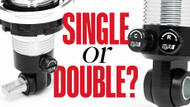Should I Buy Single Adjustable Shocks Or Double Adjustable Shocks?
Optimizing a vehicle's suspension involves choosing the right shocks, and understanding the difference between single adjustable and double adjustable shocks is crucial. Each type offers unique advantages, and selecting the appropriate option for your vehicle and your uses cases can significantly affect your performance, handling, and ride quality. This guide delves into the technical aspects of both single adjustable and double adjustable shocks, highlighting their pros and cons and providing use cases to help make an informed decision.

UNDERSTANDING COMPRESSION AND REBOUND DAMPING
A shock absorber has two actions: compression, or the shock body being driven upward by the force of a bump or at the weight of the vehicle acting on it during a driving maneuver, and rebound, which is the extension of the shock returning back to its neutral state after it’s been compressed. The more damping, the stiffer the shock; the less damping, the softer. Think of it as opening or closing an orifice, allowing less shock oil to pass through.
The more compression stiffness that a shock has, the more resistance it will be to movement, making the ride more firm and less able to absorb the road. The less compression, the less resistance, and the more spongy or unresponsive the vehicle will feel. Conversely, stiffening rebound will limit a shock’s ability to recover from a compression action before absorbing the next one, making the ride harsh; it will, however, control the rate at which the chassis returns to its “set” position after it’s been compressed. Softening the rebound damping will soften the shock’s return to its original position, but too soft will cause the chassis to lift up, or unload. This can lead to a floating feeling and even reduce traction in the rear.
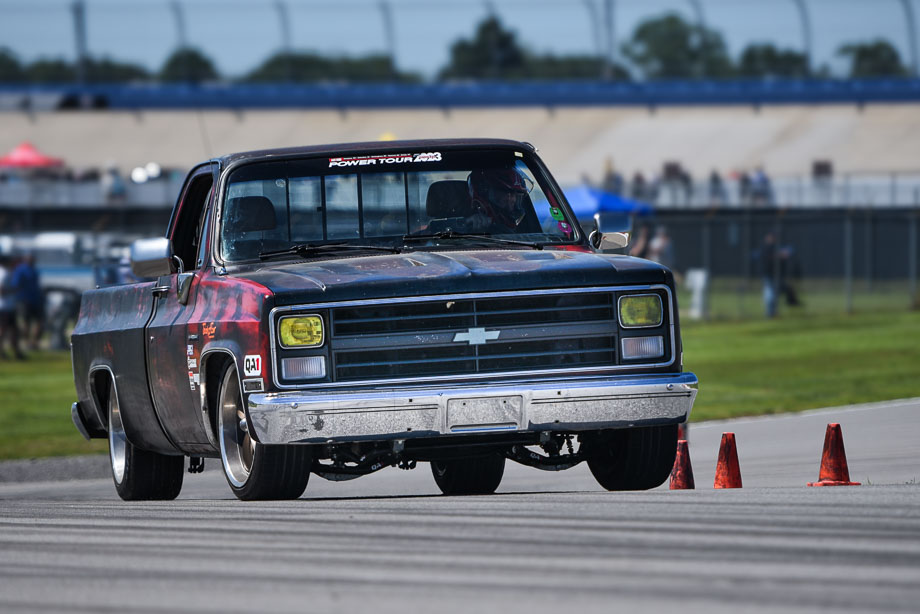
If you’re competing on a road racing or autocross course, you’ll generally go softer on compression damping, to soften and control the action of the suspension over undulations in the road and during cornering maneuvers, while rebound will be set stiffer to help control body roll and how aggressively the suspension returns to its neutral state—and how the tires are kept planted for continuous grip—as you exit a corner or the car re-settles after a bump in the road.
An entire book could be written on suspension dynamics and cornering, brake dive, and other specific situations where experienced racers can tune not only front to rear, but corner to corner to achieve optimum handling and grip.
On a drag racing application, it’s all about weight transfer to the rear axle to plant the drive tires into the racing surface.
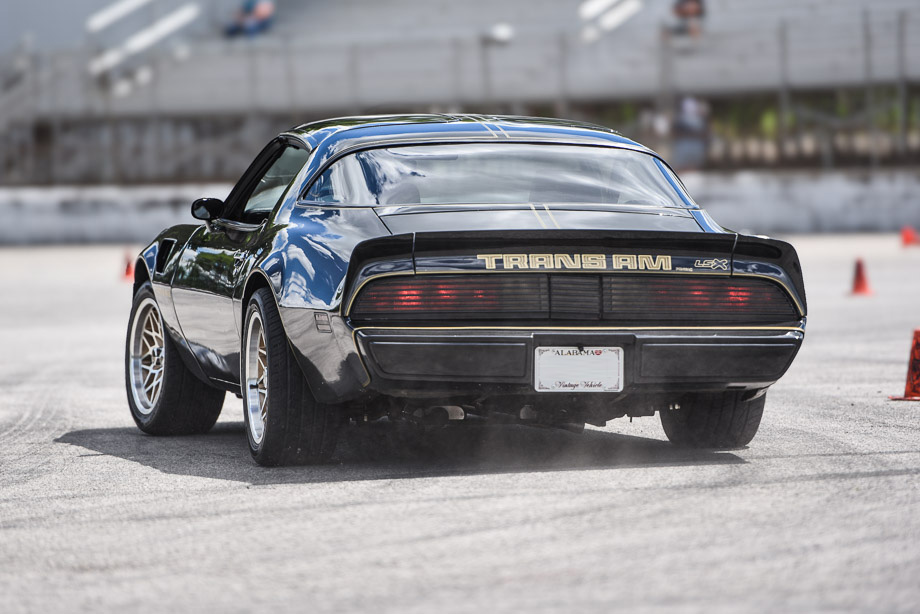
If you’re running on bias-ply stick tires, you want the nose to rise at launch, and the rear of the car to moderately squat to drive the chassis’ motion down into the tire, and the attitude to remain that way, allowing the characteristics of acceleration and aerodynamics to gradually resettle the car. This generally means running a moderate compression up front and low rebound on the front, so the shocks can extend and allow the chassis to rise and transfer weight. Conversely, the rear will have low to medium compression to limit how hard the shock compresses and “strikes” the tires at the hit, and the stiffness set high to keep the shock applying downward pressure onto the tires.
SINGLE ADJUSTABLE SHOCKS
Single adjustable shocks allow for the adjustment of compression and rebound damping, but not both independently. With only one adjustment knob, they are simpler to tune, which can be advantageous for those new to suspension tuning. Despite their simplicity, single adjustable shocks can significantly improve handling versus stock by controlling the speed at which the suspension returns to its normal position after compression. This adjustment enhances body roll, vehicle stability, and overall ride quality.
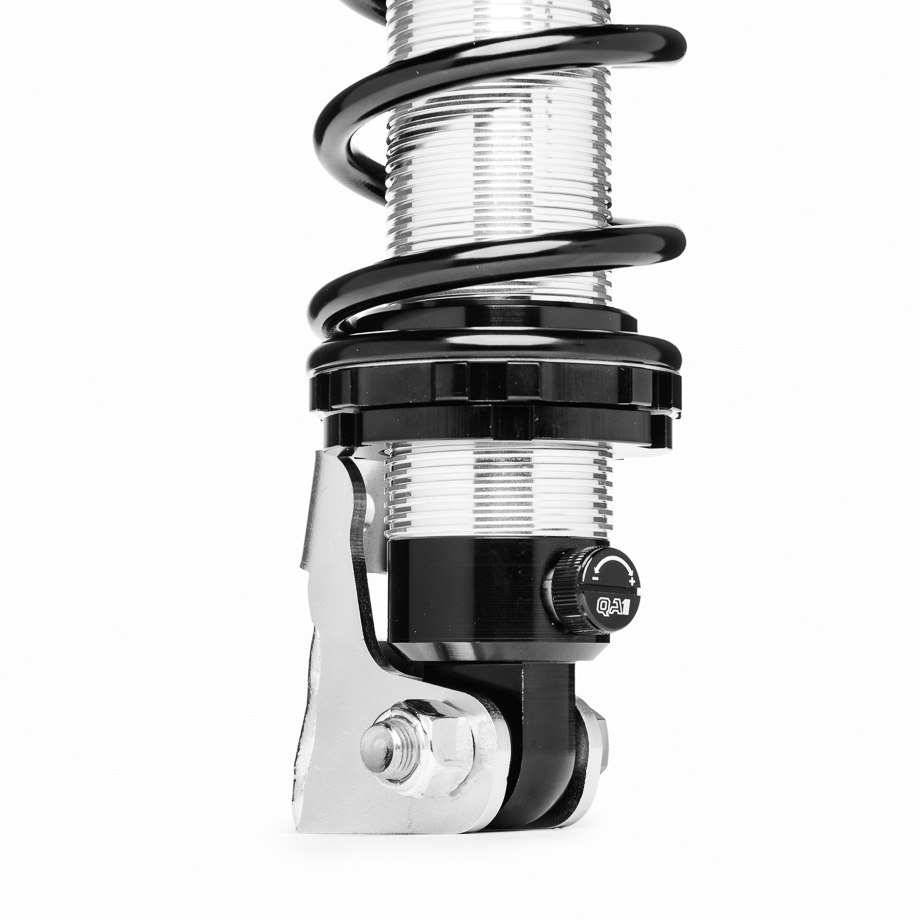
The primary limitation is the inability to independently adjust compression damping, which can restrict fine-tuning for specific driving conditions or preferences. Each QA1 shock features 18 clicks of adjustment, allowing you to strike a balance between compression and rebound damping to achieve the desired ride quality and handling. This simplicity makes single adjustable shocks great for street driven vehicles, and those looking for improved handling performance. Higher performance vehicles, especially those that spend more time on the track may find additional benefit from a double adjustable shock, which we'll cover next.
Single adjustable are generally less expensive than double adjustable shocks, making them an attractive option for budget-conscious enthusiasts. For high-performance applications, such as competitive racing, the lack of independent compression and rebound adjustment may hinder achieving optimal suspension performance.
SINGLE ADJUSTABLE SHOCKS AT A GLANCE:
- Ease of Use: Simpler tuning with one adjustment knob
- Improved Handling: Significant enhancement in handling by controlling rebound damping
- Cost-Effective: Less expensive than double adjustable shocks
- Limited Adjustability: Inability to adjust compression damping independently
Single adjustable shocks are ideal for street performance, offering improved handling without the complexity of dual adjustments. They are also suitable for enthusiasts participating in occasional autocross or track days, seeking a happy medium between performance and ease of use. Additionally, they are perfect for budget builds, where cost may be a constraint, but a suspension upgrade is still desired.
DOUBLE ADJUSTABLE SHOCKS
Double adjustable shocks provide independent adjustments for both compression and rebound damping, allowing for a higher degree of fine-tuning and customization. This dual adjustability facilitates precise tuning of the suspension setup to match specific driving conditions, vehicle weight, and performance goals. The enhanced performance potential is particularly beneficial in high-performance and competitive driving scenarios, while also working great for the street. From street to track, the double adjustables ride great for when you're cruising and provide the tunability and adjustment range for hardcore racing.
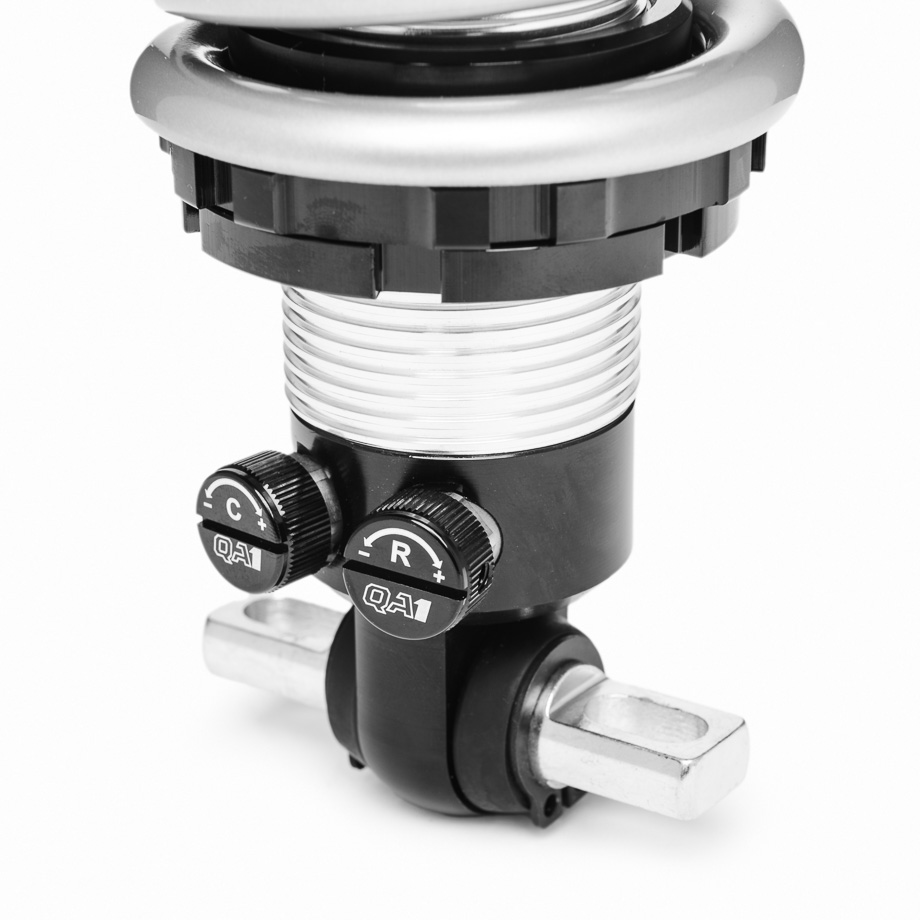
The ability to adjust compression and rebound damping independently means that double adjustable shocks can significantly enhance handling and stability. This versatility makes them highly adaptable to various applications, from street driving to professional racing. The precise control over suspension dynamics also helps achieve an optimal balance between ride comfort and handling performance.
The added complexity of dual adjustments requires a more in-depth understanding of suspension dynamics and may involve a steeper learning curve for effective tuning. Achieving the perfect setup can also be time-consuming due to the need to adjust and test both compression and rebound settings, but the juice is definitely worth the squeeze, as they say—you’ll have greater control and ultimately a better ride, with superb handing characteristics. Double adjustable shocks are also generally more expensive than single adjustable shocks.
KEY POINTS - DOUBLE ADJUSTABLE SHOCKS:
- Precision Tuning: Independent adjustment of compression and rebound damping
- Enhanced Performance: Significant enhancement in handling and stability
- Versatility: Adaptable to a wide range of applications
- Complexity: Requires a deeper understanding of suspension dynamics
- Cost: Generally more expensive than single adjustable shocks
Double adjustable shocks are essential for competitive racers who require the highest level of suspension tuning to gain a competitive edge. They are also ideal for dedicated track cars where maximizing handling performance is a priority. For high-performance street vehicles, they offer the ability to fine-tune the suspension setup for both daily driving and spirited driving sessions. Additionally, they are perfect for custom builds where precise control over suspension dynamics is critical to achieving the desired performance characteristics.
TECHNICAL COMPARISON
Adjustability is a key differentiator between single and double adjustable shocks. Single adjustable shocks adjust compression and rebound damping simultaneously, so every click of compression is also a click of rebound, and thus dialing in either precisely where you’d like it is not possible. In contrast, double adjustable shocks allow for independent adjustment of both compression and rebound damping, providing greater overall adjustability and customization potential.
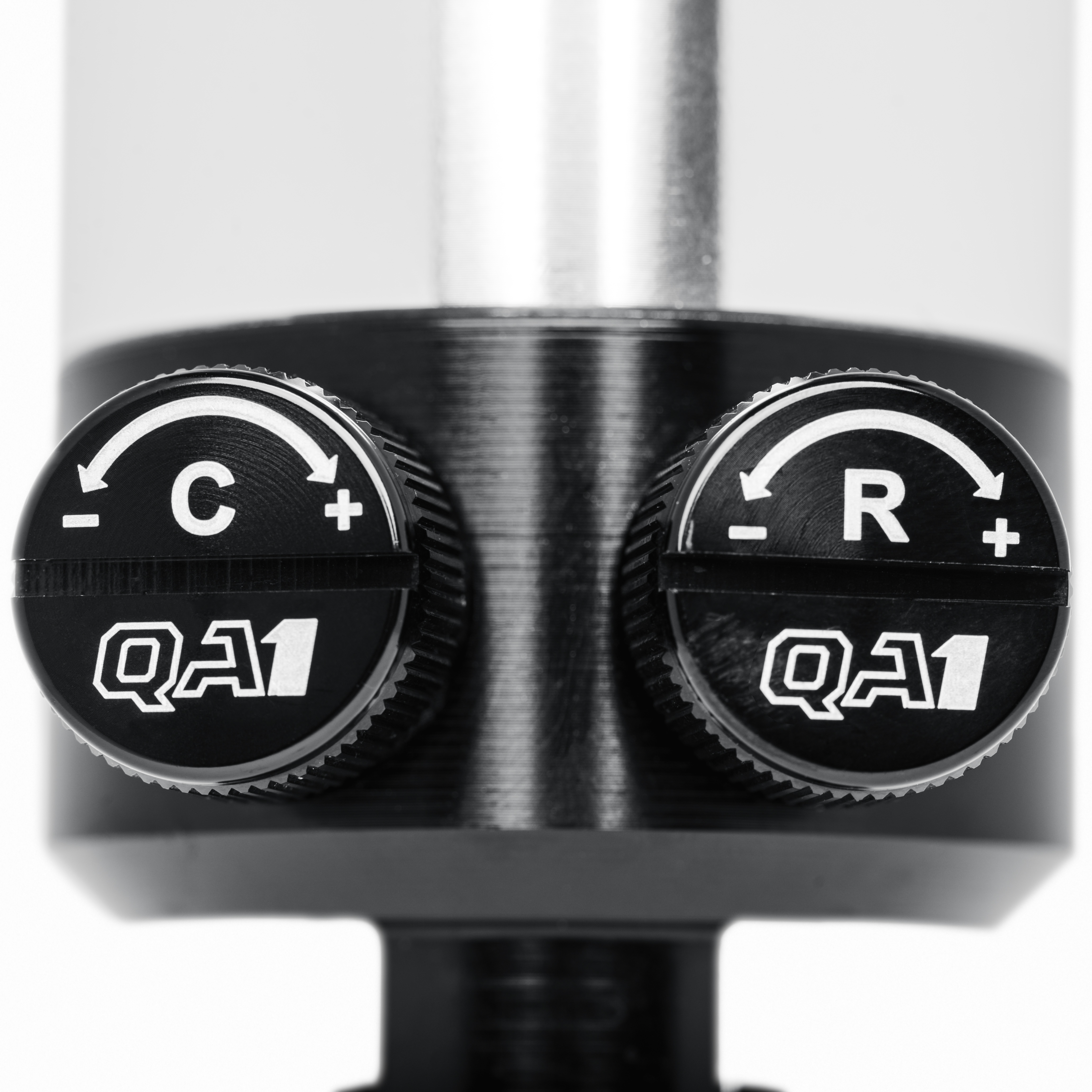
In terms of performance and application, single adjustable shocks are suited for moderate performance enhancements, balancing ease of use with improved handling characteristics. They are ideal for enthusiasts seeking a straightforward upgrade. Double adjustable shocks, on the other hand, provide maximum performance enhancement through precise tuning, essential for applications where handling and stability are critical. They are best suited for high-performance and competitive environments.
Cost and complexity also vary between the two types. Single adjustable shocks are lower in cost and simpler to adjust and set up, making them accessible for budget-conscious projects and enthusiasts with basic tuning skills. Double adjustable shocks are higher in cost due to their advanced design and capabilities. They are more complex to install and tune, necessitating a deeper understanding of suspension dynamics and suitable for advanced users and professional tuners.
MAKING THE RIGHT CHOICE
When deciding between single adjustable and double adjustable shocks, several factors should be considered. Budget is often a primary concern; if constraints are significant, single adjustable shocks offer a cost-effective solution with substantial performance improvements over stock shocks. For daily driving and occasional track use, they provide a good balance of performance and simplicity.
BROWSE ALL QA1 DRAG & STREET SHOCKS
In contrast, double adjustable shocks are necessary for competitive racing or high-performance street cars where precision tuning and maximum performance are critical. Consider your level of expertise and willingness to learn, as single adjustable shocks are easier to tune and require less technical knowledge, while double adjustable shocks offer greater tuning potential but require a more in-depth understanding of suspension dynamics and how to input the feedback from your vehicle to adjustments in the shocks.
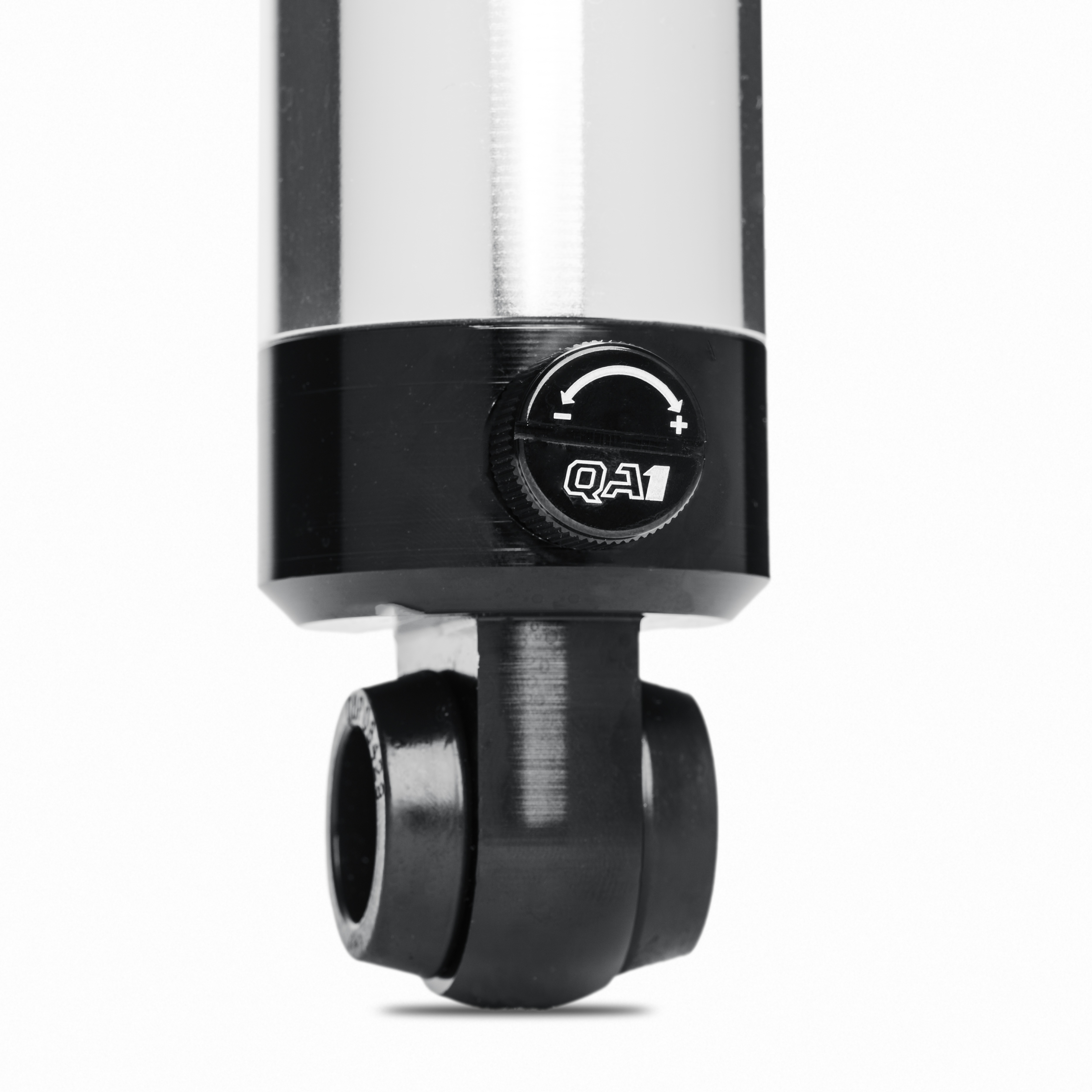
Align your choice with your performance goals. If precision tuning and maximum performance are essential, double adjustable shocks are the clear choice. For moderate performance enhancements and ease of use, single adjustable shocks are a practical option.
WRAPPING UP
Understanding the differences between single adjustable and double adjustable shocks is crucial for making an informed decision that aligns with your performance goals and application needs. By considering factors such as application, tuning expertise, performance goals, and budget you can select the right shock absorbers to optimize your vehicle's suspension and achieve the desired ride quality and handling characteristics. Regardless of which shock you choose, you can rest easy knowing QA1 backs all of its shocks with a limited lifetime warranty, ensuring that the shocks will be free from defects in material and workmanship for as long as you own them.

